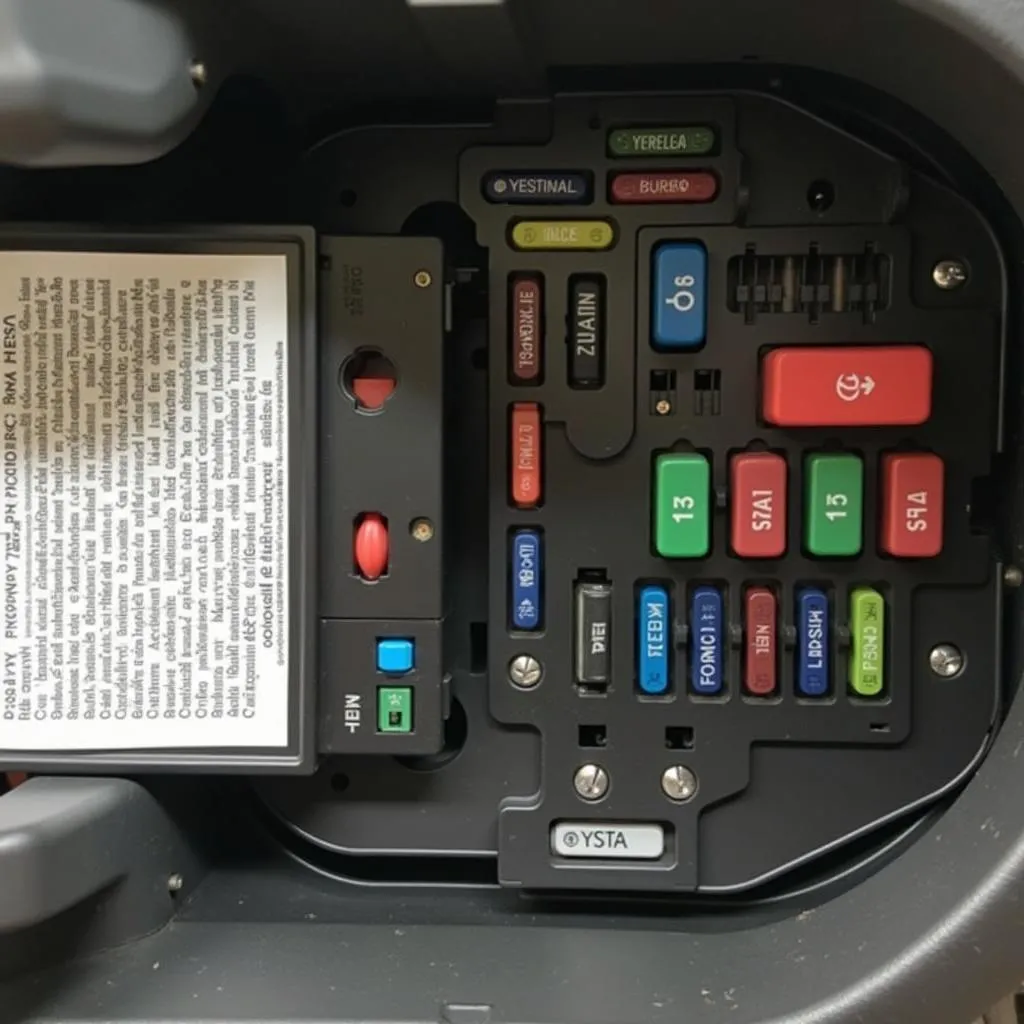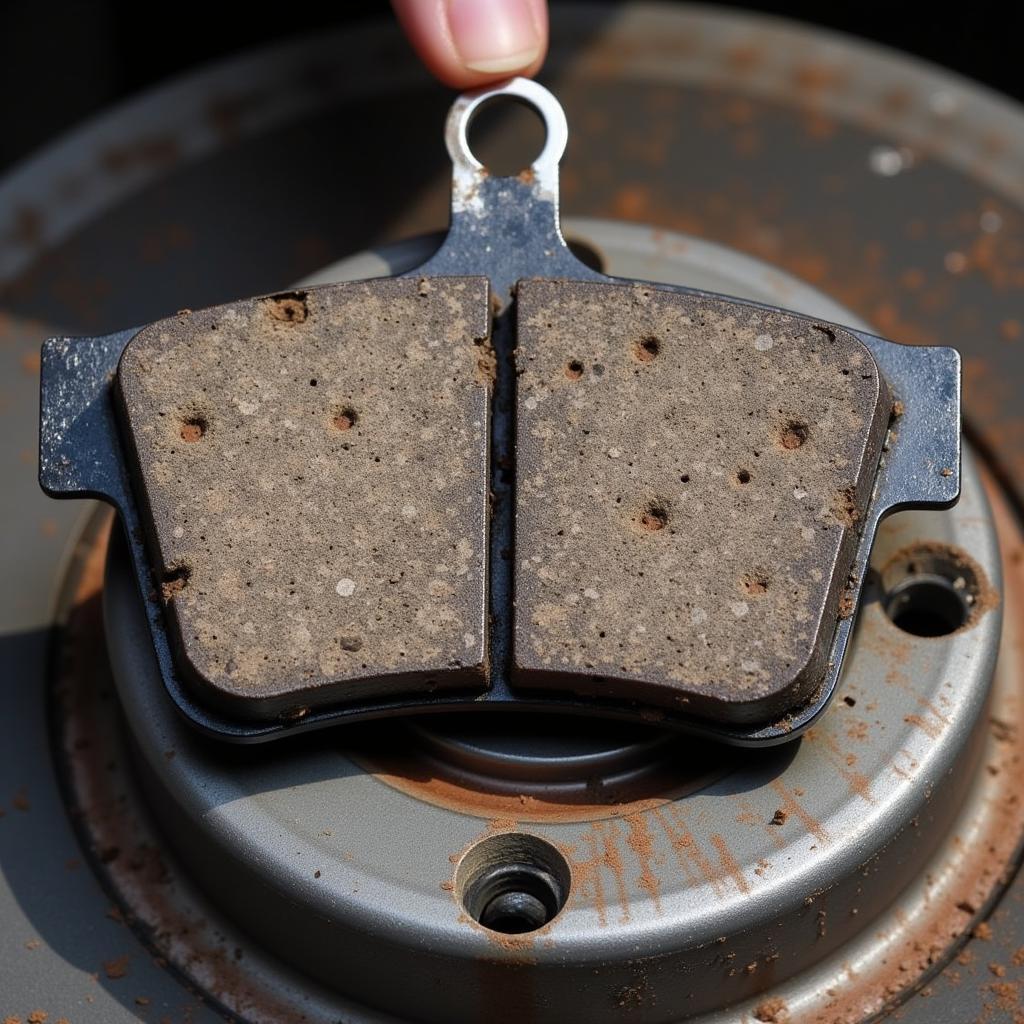Modern Seat Leons, like most cars today, are equipped with a plethora of sensors and systems designed to keep you safe and informed on the road. One of the primary ways your Seat Leon communicates with you about its status is through the dashboard warning lights. Understanding these warning lights is crucial for every Seat Leon owner, as they can signal anything from minor issues to potentially serious problems that require immediate attention.
This guide will delve into the common Seat Leon warning lights, their meanings, and what actions you should take when you encounter them.
Decoding the Dashboard: What do Seat Leon Warning Lights Mean?
Your Seat Leon’s dashboard warning lights use a universal system of colors and symbols to convey information quickly and efficiently. Familiarizing yourself with these symbols will allow you to react appropriately:
1. Red Warning Lights: Red lights indicate a serious malfunction that requires immediate attention. Ignoring these warnings could lead to damage to your vehicle or compromise your safety.
- Engine Temperature Warning Light: This light, often depicted as a thermometer submerged in liquid, signifies an overheating engine. Pull over safely and turn off the engine immediately to prevent severe damage.
- Brake System Warning Light: This warning, symbolized by a circle with an exclamation mark (!) inside, indicates a problem with your braking system. It could be due to low brake fluid, worn brake pads, or a fault in the ABS system. Seek immediate professional assistance.
- Battery Charge Warning Light: Shaped like a car battery, this light alerts you to a problem with the charging system. It could be a faulty alternator, a loose battery connection, or a failing battery.
- Airbag Warning Light: This light, usually featuring a person seated with an inflated airbag, signals an issue with the airbag system. In case of an accident, the airbags might not deploy correctly. Have the system checked by a professional as soon as possible.
2. Yellow/Amber Warning Lights: These lights indicate a potential issue that requires attention but is not immediately critical. While you might not need to pull over right away, ignoring these warnings for extended periods could lead to more serious problems down the line.
- Engine Management Light (Check Engine Light): Often appearing as an engine outline or the text “Check Engine,” this light suggests a problem with the engine management system. This could be anything from a loose gas cap to a faulty sensor. It’s best to have the issue diagnosed and resolved promptly.
- Tire Pressure Monitoring System (TPMS) Warning Light: Symbolized by an exclamation mark within a tire tread, this light indicates low tire pressure in one or more tires. Check and inflate your tires to the recommended pressure as soon as possible.
- Traction Control Light: Usually depicted as a car with skid marks, this light flashes when the traction control system is actively preventing wheel spin. A steady light indicates a potential fault in the system.
- Diesel Particulate Filter (DPF) Warning Light: Found in diesel engines, this light, often resembling a filter, indicates a problem with the DPF. It often requires a regeneration process which can be done by driving at higher speeds for a sustained period.
3. Green/Blue Warning Lights: These lights are purely informational, indicating that a system is active and functioning as intended.
- Turn Signal Indicators: These flashing arrows indicate that your turn signals are engaged.
- High Beam Indicator: This blue light, often resembling a headlight beam, indicates that your high beams are activated.
- Cruise Control Indicator: This light confirms that you have set the cruise control system to a specific speed.
Common Causes of Seat Leon Warning Lights
Understanding the potential causes behind common Seat Leon warning lights can provide valuable insights before you consult a mechanic:
- Electrical Issues: Loose battery terminals, a dying battery, or a faulty alternator are common culprits behind warning lights related to the battery, charging system, or engine management.
- Sensor Malfunctions: Modern cars heavily rely on sensors. A faulty sensor can trigger a range of warning lights, including those related to the engine, ABS, TPMS, and more.
- Fluid Levels: Low brake fluid, coolant, or oil levels can trigger corresponding warning lights. Regularly checking and topping up your fluids can prevent these warnings.
- Brake System Wear and Tear: Worn brake pads, a failing ABS sensor, or low brake fluid can activate the brake system warning light.
- Exhaust System Issues: Problems with the diesel particulate filter (DPF) in diesel engines or catalytic converter in petrol engines can trigger the respective warning lights.
What to Do When a Warning Light Illuminates
While this guide provides a general overview, it’s essential to consult your Seat Leon’s owner’s manual for precise information on your specific model year. The manual will detail the complete set of warning lights, their explanations, and recommended actions.
seat leon warning lights exclamation mark are particularly important to address quickly as they signify a potential safety concern.
Here are some general steps to take when a warning light comes on:
- Safety First: If a red warning light appears, especially for the engine temperature or brakes, pull over to a safe location as soon as possible and turn off the engine.
- Consult the Manual: Refer to your Seat Leon owner’s manual for a detailed explanation of the specific warning light.
- Check Fluid Levels: If the warning light pertains to fluid levels (brake fluid, coolant, oil), carefully check the levels and top them up if necessary.
- Visual Inspection: Perform a basic visual inspection of your car. Look for anything unusual, such as leaks, loose wires, or burnt smells.
- Contact a Mechanic: If the warning light persists or you cannot identify the cause, it’s crucial to schedule an appointment with a qualified mechanic specializing in Seat vehicles.
The Importance of Regular Maintenance
Adhering to the manufacturer’s recommended maintenance schedule for your Seat Leon is the most effective way to prevent warning lights and ensure the longevity of your vehicle.
Regular maintenance typically includes:
- Oil and filter changes
- Fluid level checks and top-ups
- Tire rotations and pressure checks
- Brake inspections and pad replacements
- Engine tune-ups
- Diagnostic scans for electronic systems
By staying proactive with your Seat Leon’s maintenance, you can significantly reduce the likelihood of encountering unexpected warning lights and keep your car running smoothly for miles to come.
Remote Diagnostics and Software Solutions: The Future of Car Repair
In today’s technologically advanced world, remote diagnostics and software solutions are rapidly changing the landscape of car repair. As an expert in automotive electrical engineering, specializing in remote diagnostics, programming, and software installation, I’ve witnessed the transformative power of these technologies firsthand.
seat leon warning lights explained can now be more accurately diagnosed remotely using advanced telematics systems that transmit real-time data from your vehicle to specialized technicians.
Here are some of the benefits of embracing remote diagnostics and software solutions for your Seat Leon:
- Faster Diagnosis: Remote diagnostics can often pinpoint the root cause of a problem much faster than traditional methods, minimizing downtime and inconvenience.
- Convenience: You can have your car diagnosed from the comfort of your home or office, eliminating the need for a trip to the mechanic.
- Software Updates: Software updates for various vehicle systems can be installed remotely, ensuring that your Seat Leon is equipped with the latest features and improvements.
“Remote diagnostics and software solutions are revolutionizing the way we approach car repairs,” says automotive engineer, Sarah Thompson. “By leveraging these advancements, car owners can enjoy a more convenient, efficient, and cost-effective maintenance experience.”
Conclusion
While encountering a seat leon warning lights abs on your dashboard can be concerning, understanding their meanings and taking appropriate action can save you time, money, and potential headaches. Remember to consult your owner’s manual for specific guidance on seat leon warning lights meaning and prioritize regular maintenance to minimize the occurrence of these warnings. As technology continues to advance, embracing remote diagnostics and software solutions will undoubtedly play a pivotal role in keeping your Seat Leon running at its best.


